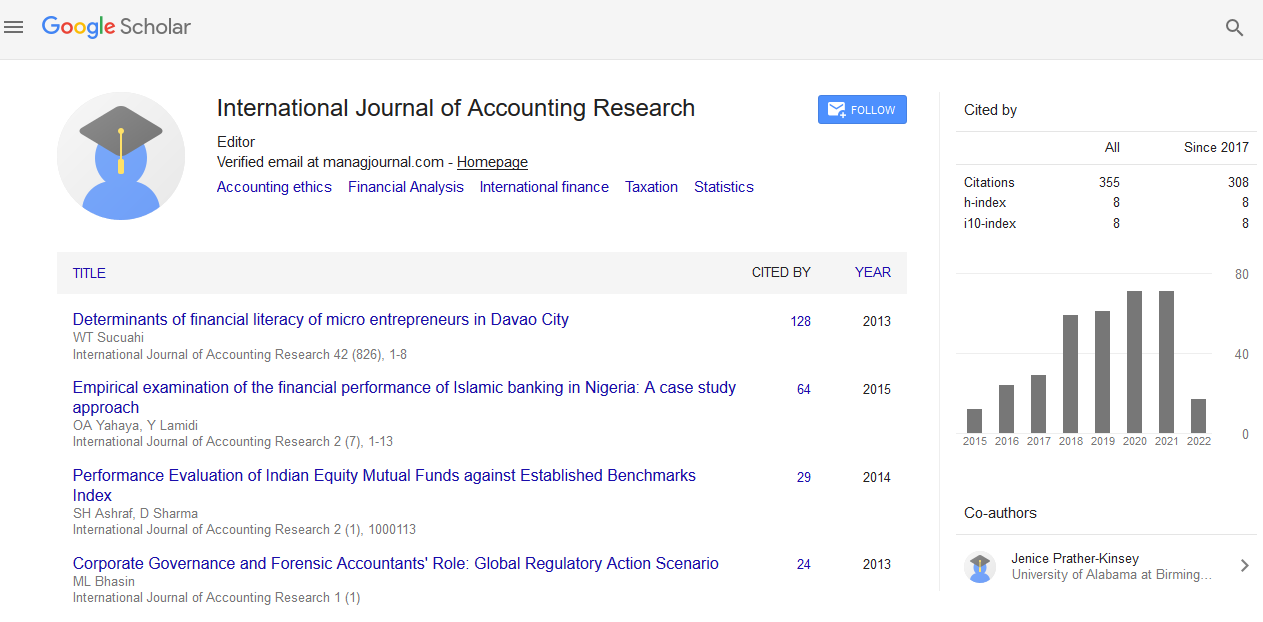Indexed In
- Open J Gate
- RefSeek
- Hamdard University
- EBSCO A-Z
- Scholarsteer
- Publons
- Euro Pub
- Google Scholar
Useful Links
Share This Page
Journal Flyer

Open Access Journals
- Agri and Aquaculture
- Biochemistry
- Bioinformatics & Systems Biology
- Business & Management
- Chemistry
- Clinical Sciences
- Engineering
- Food & Nutrition
- General Science
- Genetics & Molecular Biology
- Immunology & Microbiology
- Medical Sciences
- Neuroscience & Psychology
- Nursing & Health Care
- Pharmaceutical Sciences
Opinion - (2022) Volume 10, Issue 9
Implementing an Unobserved Budget and Expanding the Multiple Discrete Continuous (MDC) Modelling Framework
Kirsten Cole*Received: 05-Sep-2022, Manuscript No. IJAR-22-18255; Editor assigned: 08-Sep-2022, Pre QC No. IJAR-22-18255 (PQ); Reviewed: 26-Sep-2022, QC No. IJAR-22-18255; Revised: 01-Oct-2022, Manuscript No. IJAR-22-18255 (R); Published: 08-Oct-2022, DOI: 10.35248/2472-114X.22.10.294
Description
Many decisions, such as what and how much to choose from a set of finite possibilities, can be described as connected discrete and continuous choices. Several models have been created and utilized to research these kinds of judgments in the previous twenty years different Karush-Kuhn-Tucker demand system models have been created. Despite having a solid foundation in economic theory, the majority of these models have two drawbacks: they call for the budget to be specified and frequently ignore complementarity effects. Specialists suggest two additions to the Multiple Discrete Continuous (MDC) modelling paradigm in this document. There are two types of MDC models, one with explicit complementarity and substitution effects and one without explicit budget definition. The assumption behind Model is that the total cost of the potential options is relatively low when compared to the whole budget. This enables the numeraire good to have a linear utility function, resulting in a likelihood function that does not include the budget or numeraire good. When predicting, the absence of a budget is especially advantageous since it prevents cascading errors brought on by faulty budget parameters. While the derived functional form eliminates theoretical problems found in earlier formulations, the inclusion of complementarity and substitution effects enhances the interpretability of the models. Along with the models' development, we highlight their key characteristics and provide a productive forecasting strategy provide four applications to datasets pertaining to trip production, household spending, supermarket scanner data, and time utilization. Online resources include free estimating code for both models.
Numerous discrete continuous decisions can be used to represent many different options. In these, a decision-maker is presented with a limited number of options and must decide how much of each to "eat," maybe consuming zero, one, or several options. Examples of these scenarios include daily tasks, supermarket shopping, investment decisions, etc. Traditional choice models, which only allow for the selection of one alternative, are not suitable for these circumstances. The likelihood of zero consumption for individual options, commonly known as the "corner solution," is frequently overestimated by continuous models, on the other hand. Though there are some exceptions, joint models, where the continuous decision is dependent on the discrete one, typically lack a solid foundation in economic theory.
The multiple discrete continuous (MDC) consumer demand models developed by Karush, Kuhn, and Tucker Pay attention to the matters indicated in the preceding sentence. With either a direct or indirect utility function or related randomness, these models start by formally defining the consumer utility maximization problem. The Karush-Kuhn-Tucker conditions are then used to derive the best solution. Finally, using the utility function's distributional assumptions, the likelihood function for these conditions is produced. The Multiple Discrete Continuous Extreme Value (MDCEV) model is currently one of the most well-known models in this area. It has been used in a variety of contexts, including travel, time management, social interactions, alcohol consumption, purchases, energy use, investment choices, household spending data, pricing promotions, and tourism.
The MDC modelling framework has two additions. The utility is initially expressed in a new non-additive functional form that explicitly accounts for complementarity and substitution effects. Second, provide an MDC model formulation that allows for explicit complementarity and substitution but does not necessitate the creation of a budget. When the cost of all modelincluded alternatives is modest relative to the entire budget, we can omit the budget from the model likelihood using the second method, which is an acceptable approximation of a full MDC model. We do not include a stochastic error factor in the marginal utility of the outside good in any of the two suggested models in order to allow for a tractable likelihood function.
Relationships between the demands for paired products are defined by substitution and complementarity. In the event of substitution, the demand for one of them decreases, whereas in the event of complementarity, the demand for the other increases. Although the budgetary restriction naturally leads to product substitution because of income effects, this is simply a side effect. For a more accurate description of behavior in applications as varied as time use or grocery shopping, complementarity and substitution must be included. For instance, in the first scenario, it's possible that going to the movies increases people's likelihood of also eating at a restaurant. In the second instance, it's possible that items like pasta and tomato sauce are frequently purchased together. On the other hand, it's possible that as a person works more hours, they devote fewer hours to leisure pursuits. Alternatively, it's possible that as a person buys more bread, they consume fewer biscuits. When forecasting, the issue becomes more serious. Any forecast from a model needs a budget, and forecasting the budget-for example, a person's future income-is a separate issue that creates cascading mistakes in the forecast values.
Citation: Cole K (2022) Implementing an Unobserved udget and Expanding the Multiple Discrete Continuous (MDC) Modelling Framework. Int J Account Res. 10:294.
Copyright: © 2022 Cole K. This is an open-access article distributed under the terms of the Creative Commons Attribution License, which permits unrestricted use, distribution, and reproduction in any medium, provided the original author and source are credited.


